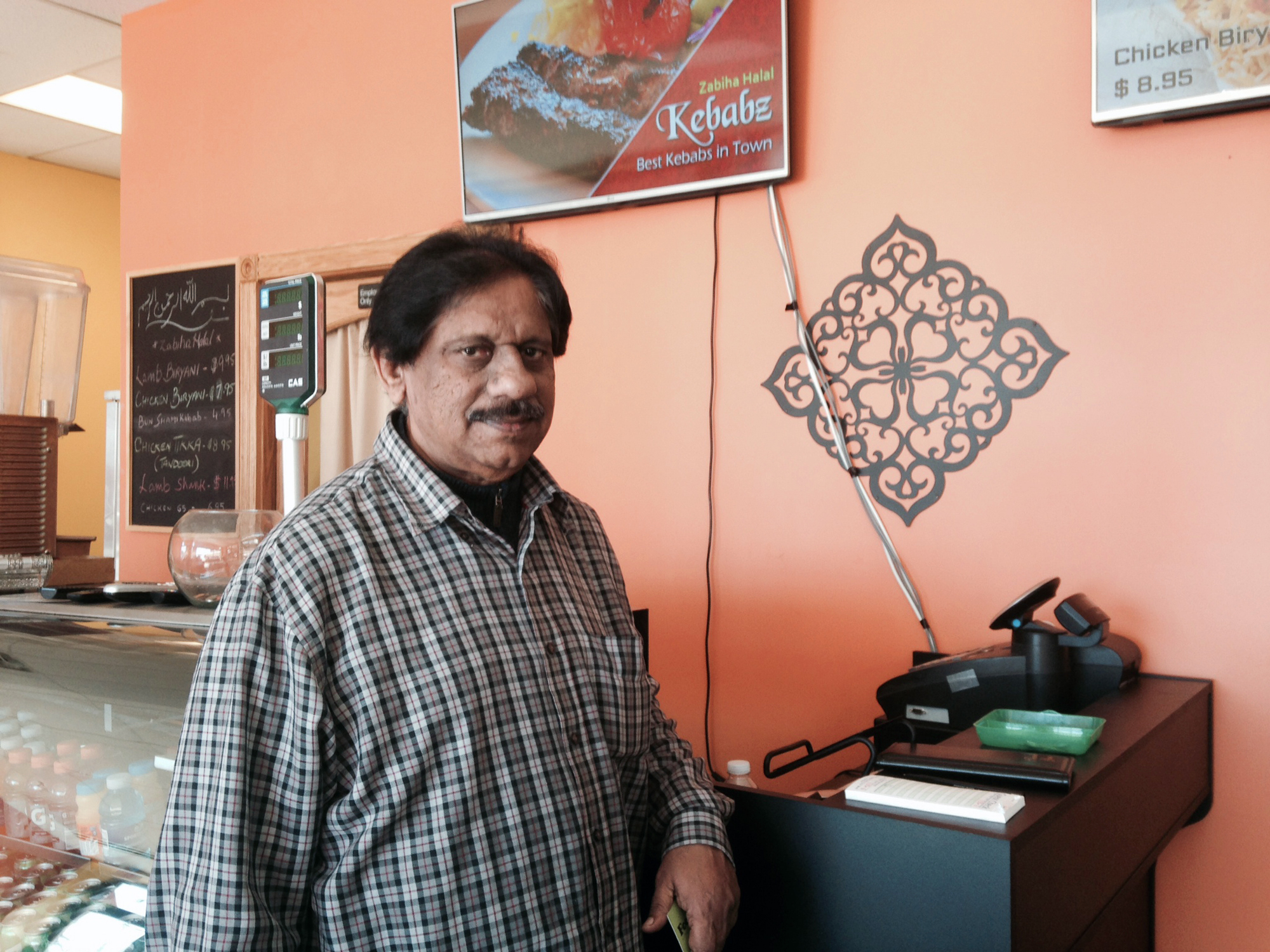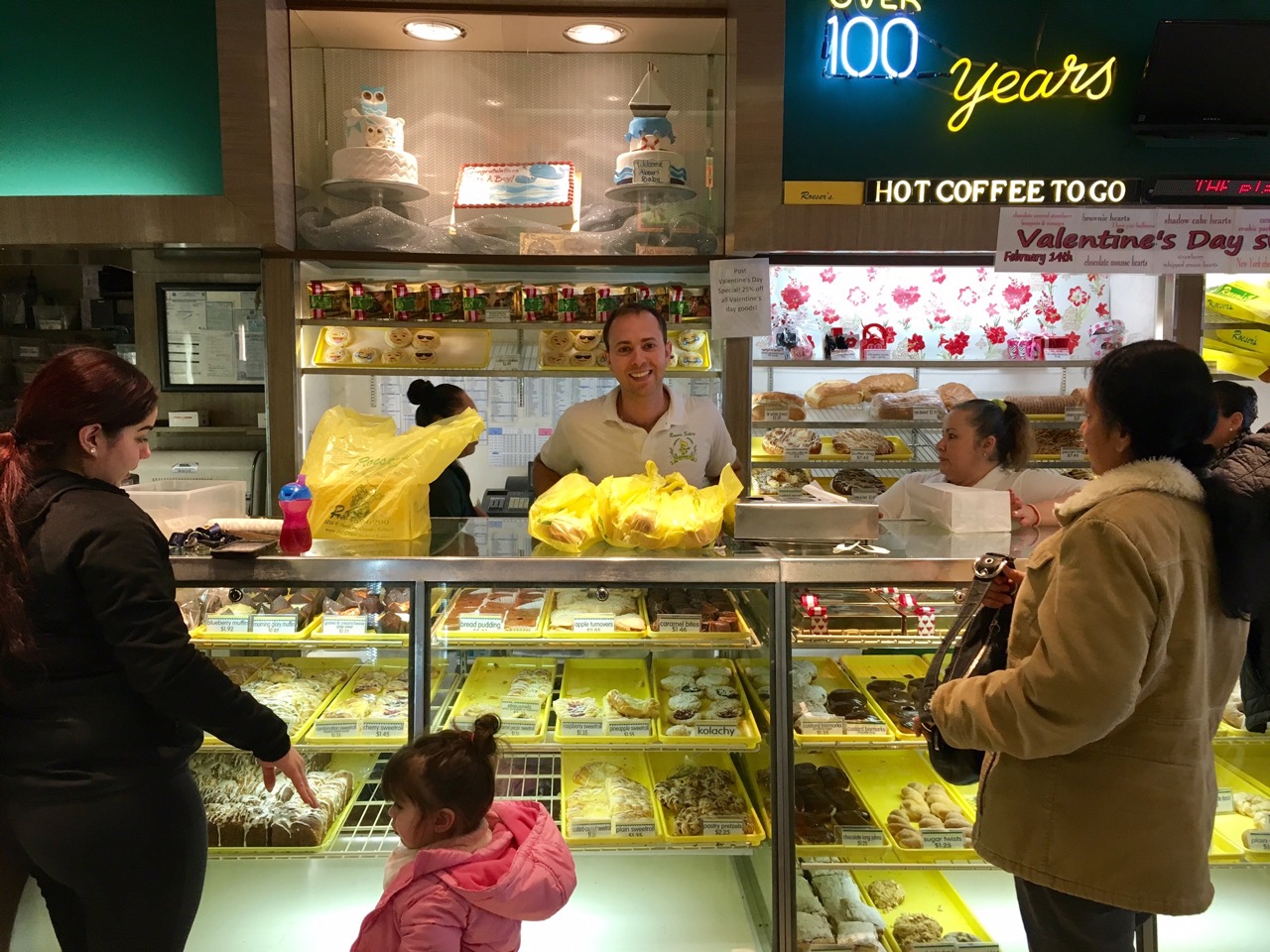WE TEND TO THINK OF FARM TO TABLE in a way that signals our seriousness about food—let’s roast that naturally-raised chicken with some organic carrots and heritage potatoes, and eat a farm family dinner right out of a… celebrity chef cookbook, probably.
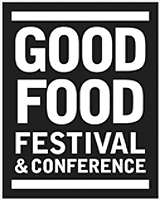
This story was developed in partnership with the Good Food Festival, March 16-18 at UIC Forum, GoodFoodFestivals.com. Editorial is the sole production of Fooditor.
But man cannot live by virtuous eating alone. Sometimes we just want pleasure—like soda pop. A splash of bright sugary flavor in the day to perk us up. Is that so bad? It’s artificial, sure, white sugar with synthesized flavors, but does it have to be? After all, the synthesized flavors are at least attempting to imitate real flavors, nature’s flavors. Couldn’t you come up with a version of that that actually shows its roots on a farm?
Thoughts like these occurred to southwestern Michigan resident Michele Gazzolo a few years ago. At her brother’s wedding, the nonalcoholic champagne served made her think that there needed to be soft drinks “with those characteristics—a healthy-seeming drink with less sugar and a sparkling taste. Something herbal and botanical.” But as she says, “I’m a foodie, but I had no background in this,” so at first the thought went nowhere.
Some time later she went on a trip to England—and discovered that the category she was thinking of actually existed there. “I went to the grocery stores and there were many kinds of drinks and cordials, like Belvoir, made from cold-pressed juices,” she says. “Most of them were built around apples, and they were cloudy juices, full of natural enzymes, with four times the antioxidants of standard commercial fruit juices.” In fact, probably building on the way the Campaign for Real Ale had changed British attitudes toward beer with natural sediment, she says “‘Cloudy’ had become a marketing term,” a symbol of how natural the beverage was.
Seeing the success of these products in England convinced her that it could work in the U.S., too. “We live in a fruit belt,” she says she thought. “We can do this.”
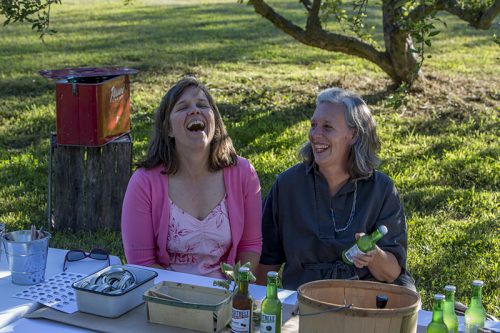 White Barn Studios
White Barn Studios Beth Denton and Michele Gazzolo
BASED OUT OF SAWYER, MICHIGAN, FRUITBELT makes two sparkling water tonics from fruits common to the southwest Michigan Harbor Country area (apples and cherries) which are starting to be distributed around the upper midwest. In Chicago you can buy them at grocers like Local Foods and Pete’s Fresh Market (they hope to roll out in Whole Foods locations soon), and they’re also turning up on menus—for instance, I saw them at The Gundis, the new Kurdish restaurant in Lakeview, the other day.
The apple one is called Crisp Apple, and bills itself as primarily apple-caraway; the cherry one is called Bright Cherry, and is billed as being cherry-ginger, though the truth is, both of them have other botanical flavors as well, and are too complex to pigeonhole as tasting just like, say, ginger. As the name “tonic” suggests, they’re more tart than overly sweet, though the flavor of honey is discernible. (They also use a Chinese berry sweetener, monk fruit, but I couldn’t tell you if that flavor is discernible.)
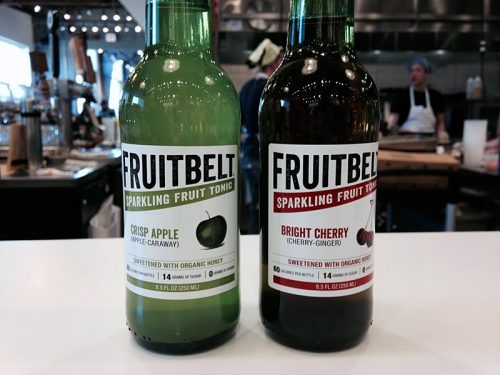 Michael Gebert
Michael Gebert Fruitbelt tonics, at Local Foods
Getting Fruitbelt’s tonics to the point where they could be found in stores and restaurants was a bit of a twisted tour through the food system. Fruit juices are highly regulated by the USDA, because of the potential for contamination and fermentation. Gazzolo’s family owns a pharmaceutical distribution company in Chicago, so she felt like she understood what she was getting into. Her first step was to partner with her friend Beth Denton, whose title is “Soda Muse.”
“We started on the adventure of formulating a drink without benefit of a lab or flavor house,” she says. “Beth became the resident food chemist, and taught herself how to measure brix—sugar levels— and pH, which indicates how likely the drink is to ferment.”
The second step, they thought, was to find a plant that was already working with fruit juices to make hard cider, and have them produce and bottle it. But it turned out that’s the one place you can’t make a non-alcoholic fruit beverage: “We tried talking to cider makers, but the airborne yeast in a facility like that make it impossible to produce non-alcoholic fruit juice in that environment.”
Then there was the matter of precisely how you produce it—if it was going to be shelf-stable, it had to be pasteurized. “When you pasteurize fruit juice, you kill everything that’s good about it,” Gazzolo claims. “So we decided it needed to stay cold the entire time.” They found that there were only four places in the U.S. where you could manufacture carbonated fruit drinks using cold sterilization, and selected a plant in Pennsylvania. That represented a compromise on their aspiration to be hyperlocal, but Gazzolo says, “The supply chain is evolving. You can’t have the fantasy of everything being produced within 100 miles.”
We set out to make the drink as clean as possible. In the industry, artificial fruit flavorings are taken for granted.
Focusing on the nutrients and health benefits was essential to their plan, beginning with the fruit of the Harbor Country region—the apple tonic starts with pressed juices from about two dozen different varietals grown at Tree-Mendus Fruit Farm in Eau Claire, Michigan, while the cherry tonic starts with cherry concentrate made at King Cherry Orchards near Traverse City. Gazzolo says, “We set out to make the drink as clean as possible. In the industry, it’s taken for granted that you’ll need artificial fruit flavorings,” if not for the main flavor, at least for other flavors in the mix.
Even if manufacturing was happening elsewhere, they remained determined to create flavors mainly using things grown in the same region as the fruit they used. Specifically, they approached creating the flavor profile more like you’d make a cocktail than like a fruit juice blend, working with companies that produce bitters to make concentrated flavorings from everything from chicory root and dandelions to aronia berries (extremely high in antioxidants) and propolis, a product of bees. The result is complex flavors that, not surprisingly, work very well as mixers, too. (Their neighbors in Sawyer, Greenbush Brewing, feature them that way at their Annex bar.) “All these things have health benefits, bio-nutrients,” she says. “Distilling them with a little alcohol into bitters isn’t creepy, it’s a traditional way of using flavors.”
Bottled in green glass to keep UV light out and prolong freshness of the unpasteurized product, Fruitbelt tonics hit the local Harbor Country market in early 2016 and have been spreading outward to markets from Chicago to Ann Arbor since then. So far they’ve demonstrated how you can bring a local area’s bounty to market successfully on a modest scale and grow, er, organically, doing a modest round of crowdsourced funding via Localstake.
Last year they also started a six month program, the Good Food Business Accelerator, which coaches local food startups and includes the opportunity to pitch investors during the Good Food Festival this weekend. “Our experience with the Accelerator has been stellar,” Gazzolo says. “We have loved every darn minute of the experience, and I would recommend it to anyone who wants to deepen their knowledge of business while remaining true to their vision, and broaden their network of friends, collaborators, and allies.”
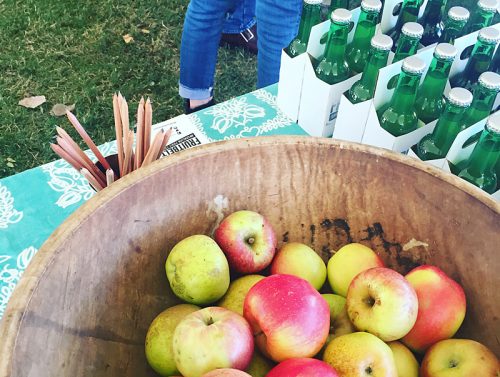 White Barn Studios
White Barn Studios So soft drinks aren’t exactly the image that “local food” conjures up, but that’s what they are. As Gazzolo says, “We went with the fruitbelt theme because we live in a microclimate where fruit grows particularly well. It’s an ice age thing of the right terrain and mild breezes—it can’t be created, but southwest Michigan has those traits.” Then you take that fruit and meld it with the other plants that grow around it. “They’re everyday things that grow in the orchard and belong to that ecosystem. They tell a story, being together.”
Michael Gebert writes the post that refreshes, as editor of Fooditor.
Cover photo: White Barn Studios
Latest
Join the Discussion
After you comment, click Post. If you're not already logged in you will be asked to log in or register with Disqus.





